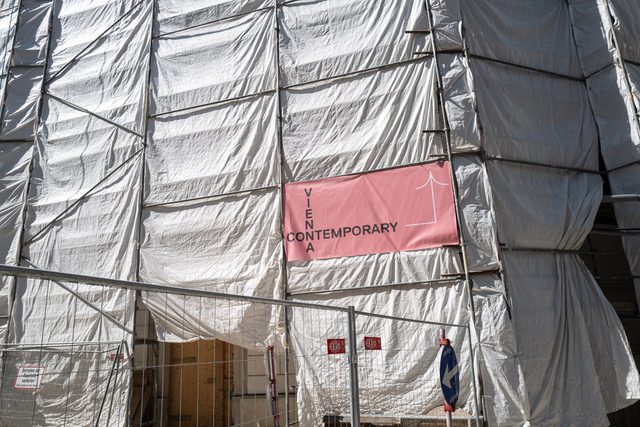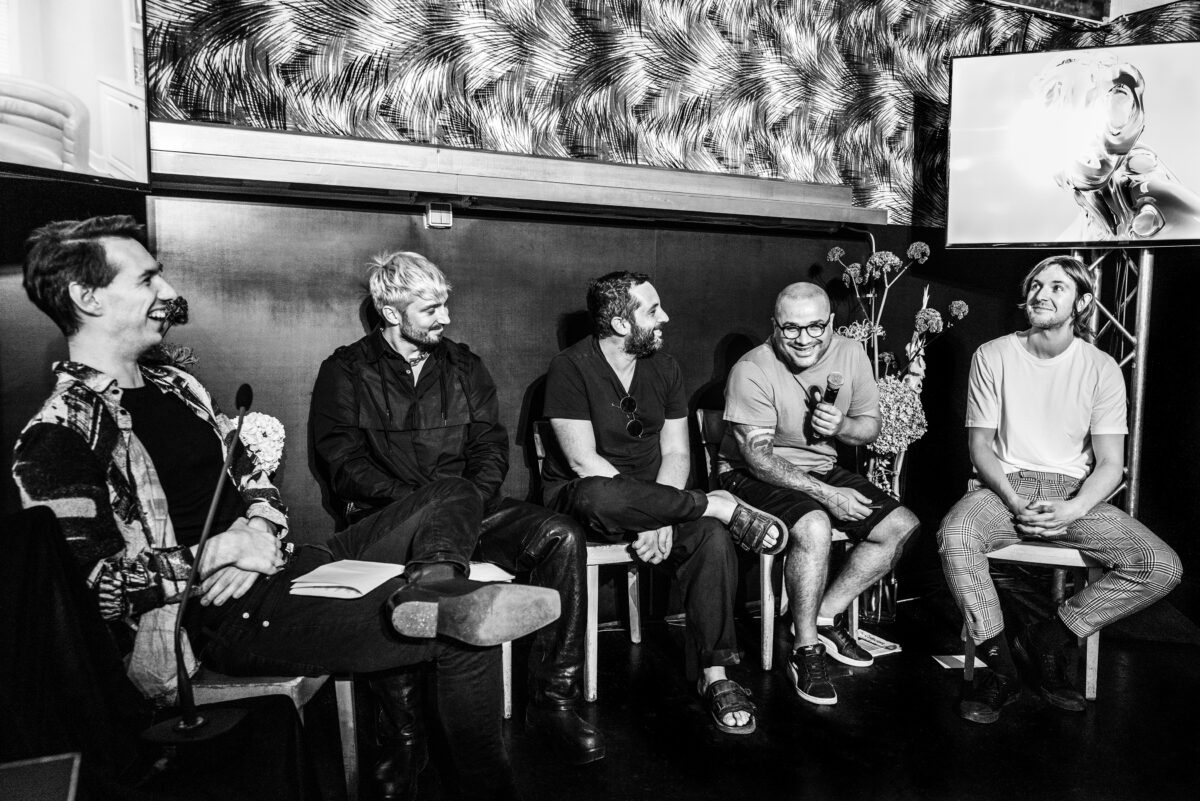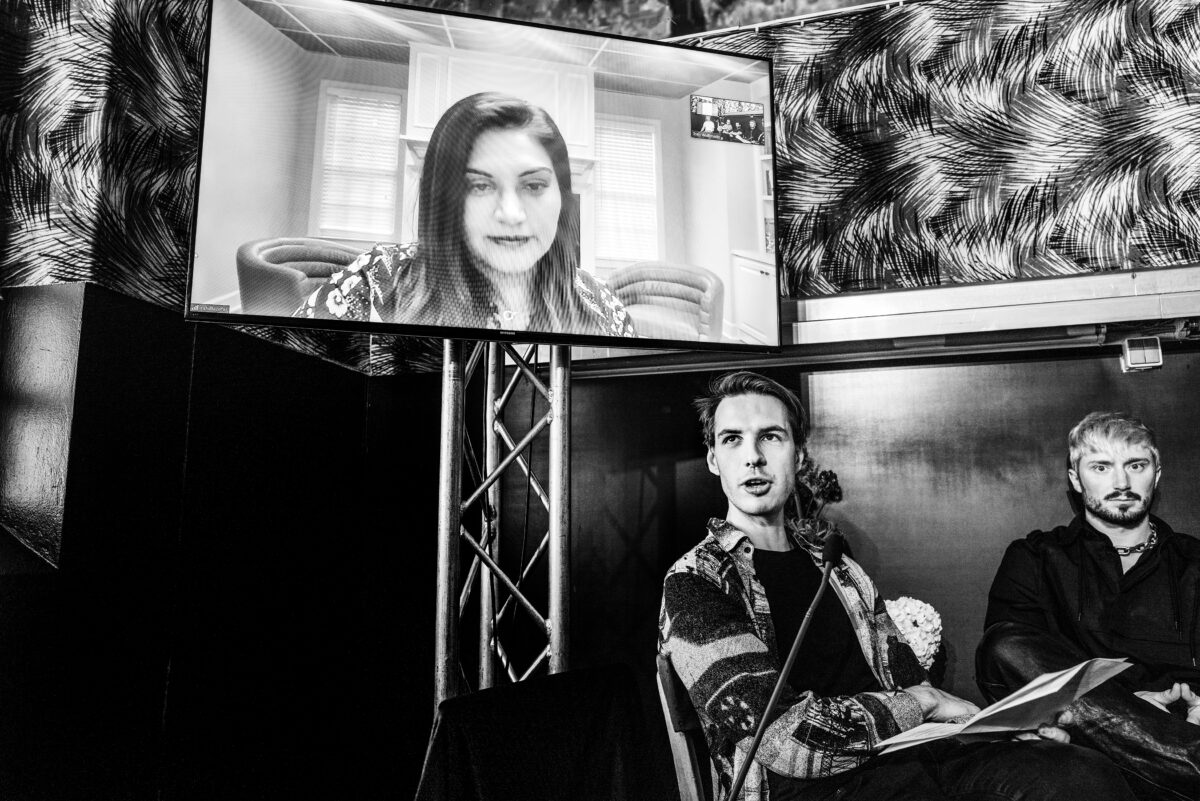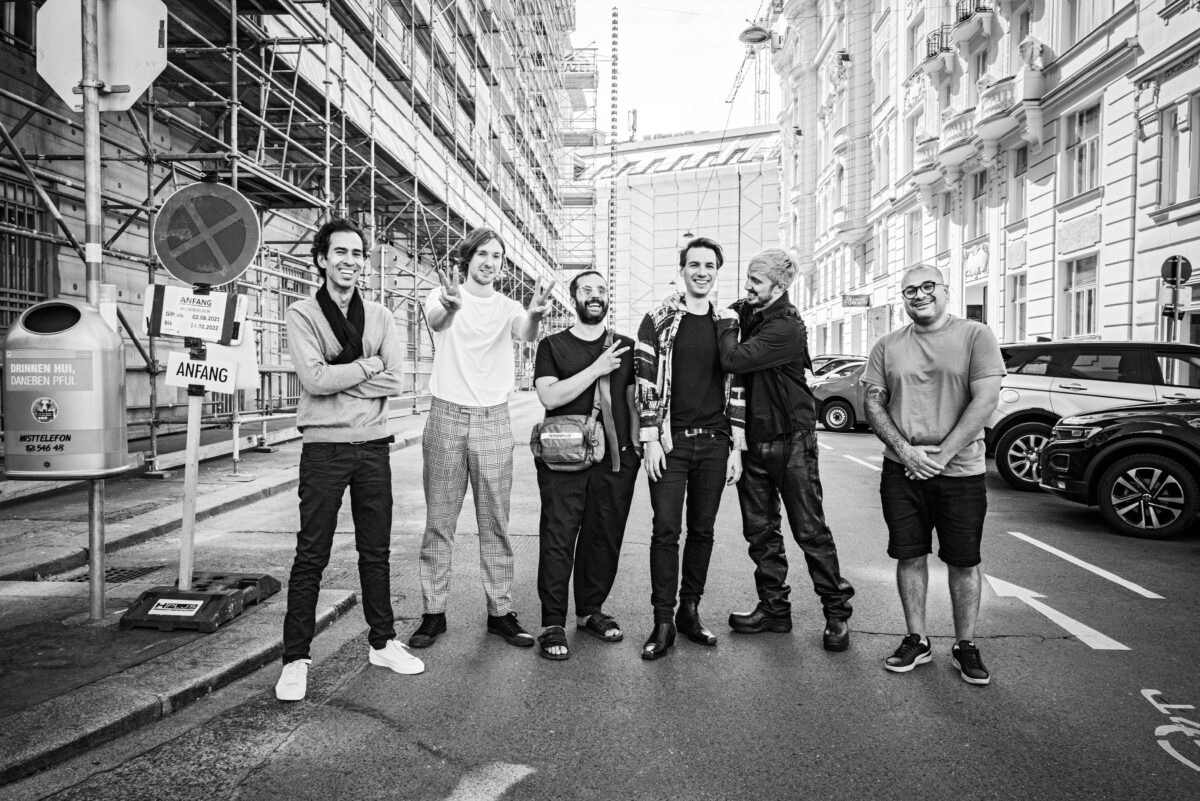Vienna Contemporary celebrated its return to art in real life for its 2021 edition in the first week of September. As the leading art fair in Austria, the curatorial focus was contemporary art from 25 galleries across 10 countries in Central and Eastern Europe. In addition to the selected galleries, the fair featured a robust program including tours throughout the city, performances, special projects, and panel discussions. While the facade of the building was under construction, the scaffolding felt appropriate and symbolic as a new chapter in the history of art is being written.

© by Rainer Hosch
Creative Director Rainer Hosch attended a discussion called, “NFT – The Future of Art?” The panel was of particular interest to us at Installation Magazine as we have long believed in the intersection of art and technology. We look at technology as a tool to share our editorial features but also as a canvas for artists to explore their vision beyond traditional mediums. As the first all-digital contemporary art publication we designed for the iPad and iPhone just as Apple introduced Retina displays in 2013. Moving covers were a signature for each issue, bringing a curated image to life and creating a visceral experience for the reader. The editorial ethos has always been driven by the mantra that art should be a source of conversation and not intimidation and technology felt like the great equalizer in making art a part of the dialogue. As the possibilities of NFT’s reveal themselves each day, we are intrigued by the promise of a medium that while is still very much in its infancy has already transformed the traditional art market model. As a growing community of multidisciplinary artists, the blockchain transcends geographical boundaries and exchange rates. Artists no longer need formal representation nor do they have to wait for an opportunity to show their work in a white cube environment such as a gallery, art fair, or institution. The metaverse is the new frontier to connect, collaborate and create.
The panel brought together disruptors and visionaries on the front lines of creativity. The panel members are:
Benoit Pagotto, Co-founder RTFKT and Partner and Curator in Chief at THE MINT
Edward Cawley, KnownOrigin.io, Artist Relations
MGXS – Fernando Magalhães, Artist
WEBB, Artist & Founder of CRYPTOWEEBS
Rahilla Zafar, Executive Producer, MINTED, Advisor to 4R Capital (joined online)
Moderated by James Joseph, Founder and Editor-in-Chief of CYBR Magazine, Partner and Editorial Director at THE MINT

© by Rainer Hosch

© by Rainer Hosch
There are three letters on the tip of everyone’s tongue- whether they be artists, collectors, auction houses, investors, journalists, or the culturally curious- NFT. Once those letters are uttered the inevitable follow-up question goes something like, “WTF is an NFT anyway?” How can an acronym create such disruption? Crypto art inspired the founding and development of marketplaces like KnownOrigin and RTFKT that support and develop new artworks for the blockchain. Podcasts, Twitter, Discord, and ClubHouse rooms run through all hours all of the day, crowded with listeners eager to learn of new drops, and hear their favorite artists shine a light on their process.
A technology that both challenges and creates a new way to create, collect, curate, and sell original artwork, an NFT, or a non-fungible token refers to a unique file made or “minted” on the blockchain ledger. A work is authenticated by an alphanumeric sequence of 42 characters and remains secure on a decentralized network. NFT’s also challenge the traditional philosophy of ownership as an artwork no longer lives on our walls but is secured in a digital wallet, shared among an audience in the metaverse. Do we need to be able to reach out and touch a work to confirm its existence or justify its value? Or can we embrace crypto art as a new kind of collection?
Perhaps the most compelling facet of an NFT is its transparency. Each file is embedded with a unique stamp of metadata that allows its every move to be traced. That is from the moment it is minted and officially enters the blockchain. The name of the collector and purchase price remains public and its journey can be followed in perpetuity. Where there was once a question about the provenance of an artwork, the blockchain creates a roadmap that traces the journey of work even as it migrates into the secondary market. For the first time, an artist receives royalties from every sale on the secondary market.
In the traditional gallery model, the price of artwork was seldom revealed to the public and was deemed as privileged information unless it was sold at auction. The buyer and the gallerist entered into a handshake agreement whereby the gallery hoped to remain apprised to the future of the artwork but could never be guaranteed of how or when the work exchanged hands and for what price. The artist however would only receive a portion from the first sale, despite any records set at auction.
One NFT, in particular, captivated the attention of millions as if in hyperspeed and set a new precedent for what art can be. Christie’s, the esteemed auction house founded in 1766 announced its first-ever purely digital work for sale in March of this year. This historic moment was not only monumental for Christie’s and auction houses everywhere but challenged the conventions of the traditional and rigid system that had been in place up until that very moment. Digital artist Mike Winkelmann who works under the moniker Beeple (who was featured in the early issues of Installation Magazine), has been creating digital works titled “Everydays” for the past 14 years. His work has always been made public and shared across his social media channels. “Everydays: The First 5,000 days,” was a collage of the works that Beeple has been creating since 2007. The auction closed at $69 million making Beeple a household name and propelled him into a historic stance- the third-highest price work ever achieved by a living artist following in the footsteps of Jeff Koons and then David Hockney. To further legitimize cryptocurrency and its new role in the art market, Christie’s offered to accept payment in Ethereum.

© by Rainer Hosch
Can the digital and the physical facets of the art market co-exist? Is cryptocurrency sustainable given the tremendous amount of resources required to mine Ethereum? What about the environmental impact behind NFTs? Is there enough bandwidth to support the rapidly growing marketplace? How can we expect the blockchain to develop over the next year? What is the role of the curator in a landscape driven by an algorithm?
Installation Magazine will present a series of interviews with members of the panel to capture unique perspectives of the crypto evolution.
Watch the entire conversation presented at Vienna Contemporary in partnership with THE MINT and join us as we uncover the vast expanse of the blockchain.
Vienna Contemporary returns next year September 22-25, 2022
All Photographs © Rainer Hosch 2021 for Installation Magazine
